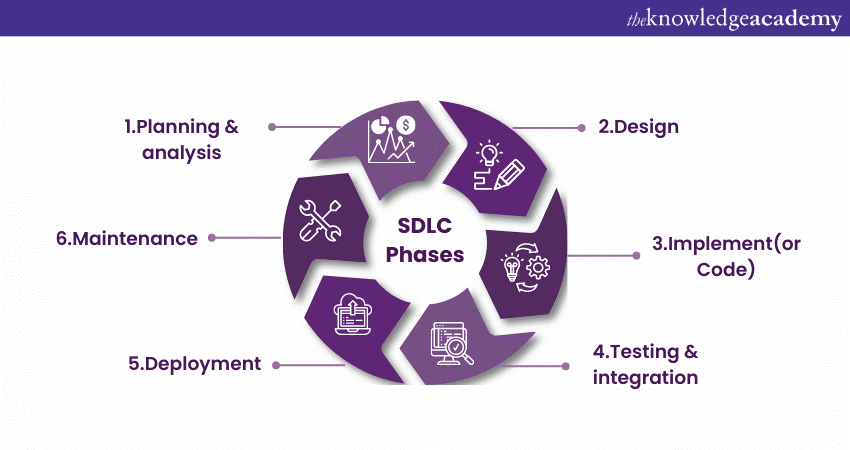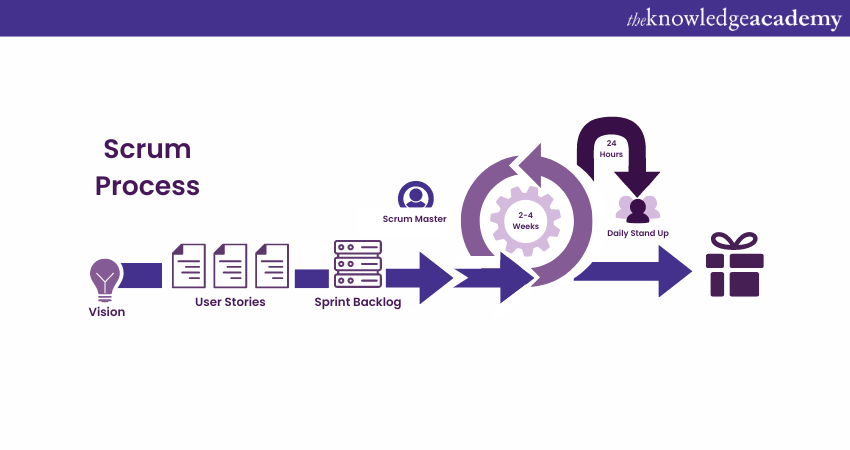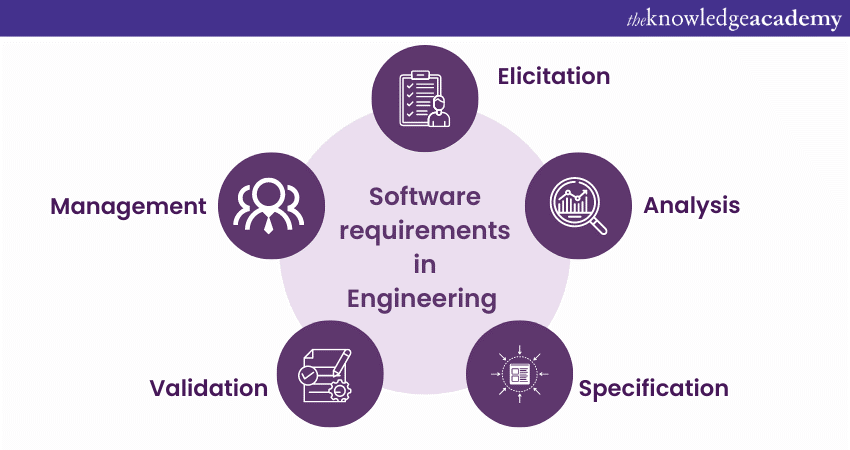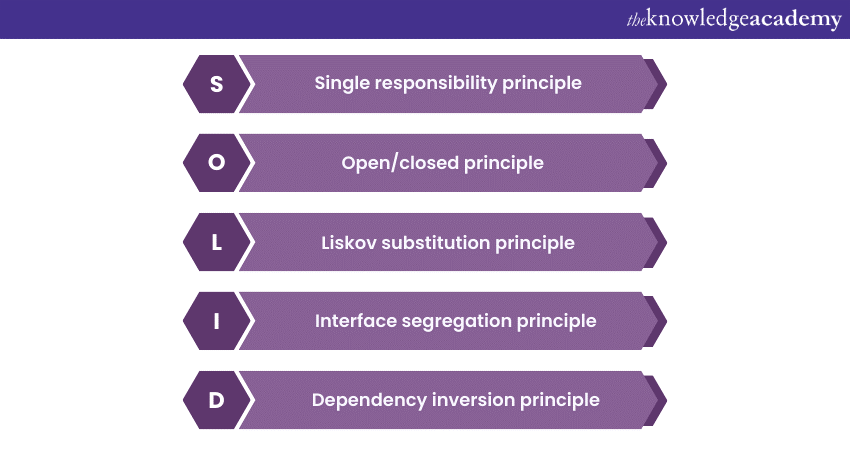We may not have the course you’re looking for. If you enquire or give us a call on +44 1344 203 999 and speak to our training experts, we may still be able to help with your training requirements.
Training Outcomes Within Your Budget!
We ensure quality, budget-alignment, and timely delivery by our expert instructors.

In this rapidly evolving technological world, one term has emerged as the cornerstone of innovation and progress: Software Engineering. It has become the driving force behind the apps on our smartphones and the websites we browse. But do you know What is Software Engineering, and why is it so crucial in today's digital age?
According to Statista's projections, the Software market is poised to achieve a staggering revenue of 25.9 billion GBP in 2023. With such high numbers, the requirements for Software Engineers are also bound to increase exponentially.
So, for those looking to tap into this domain, it's crucial to understand the meaning and components of Software Engineering. In this blog, we will help you understand What is Software Engineering, its features, methodologies, and processes. Keep reading to learn more.
Table of Contents
1) Understanding Software Engineering
2) Key concepts in Software Engineering
3) Roles in Software Engineering
4) Software Engineering methodologies
5) Software Development processes
6) Software requirements in Engineering
7) Design principles in Software Engineering
8) Coding and Implementation
9) Software Engineering tools
10) Challenges in Software Engineering
11) Future trends in Software Engineering
12) Conclusion
Understanding Software Engineering
Software Engineering embodies the systematic application of engineering principles in software systems conception, design, construction, and maintenance. It merges creativity with technical mastery, translating abstract ideas into functional and dependable software solutions. Software Engineers are known as architects of the digital world, as they develop software that drives business processes, enhances user experiences, and resolves intricate challenges in the digital world.
Significance of Software Engineering
Software Engineering holds immense significance in today's technology-driven world, as it underpins the entire spectrum of human activities, shaping, advancing, and revolutionising various domains. Here, we highlight key points that underscore the importance of Software Engineering:
a) Innovation catalyst: Software Engineering drives innovation, enabling the creation of novel applications, systems, and solutions that reshape industries and improve lives.
b) Business empowerment: It empowers businesses by providing tailored software solutions that optimise processes, enhance customer experiences, and facilitate data-driven decision-making.
c) Global connectivity: It fuels global connectivity through applications, websites, and platforms that bridge geographical gaps and connect people and information seamlessly.
d) Healthcare and medicine: Critical software systems manage patient records, medical devices, and diagnostics, contributing to improved healthcare delivery, patient outcomes, and medical research.
e) Education and learning: Educational software facilitates remote learning, personalised instruction, and knowledge dissemination, transforming traditional classrooms and expanding access to education.
f) Entertainment and media: It powers entertainment platforms, games, streaming services, and digital media, offering diverse and engaging content to audiences worldwide.
g) Scientific advancement: Software-driven simulations, data analysis, and modelling contribute to scientific breakthroughs in astronomy, climate science, and particle physics.
h) Aerospace and defence: Software controls complex aircraft, satellites, and defence systems, ensuring mission success, safety, and national security.
i) Financial services: Software facilitates secure online banking, trading platforms, and financial analytics, supporting economic activities and transactions globally.
j) Sustainability and environment: Software solutions optimise resource usage, enable smart energy management, and enhance environmental monitoring for a more sustainable future.
Evolution of Software Engineering
From basic code scripts to the intricate web of interconnected systems, Software Engineering today has traversed a path of increasing intricacy and sophistication. Challenges that once revolved around crafting simple algorithms have matured into orchestrating intricate machine-learning algorithms, managing distributed systems, and shaping the landscape of Artificial Intelligence. Software Engineers evolve in tandem as technology advances, adapting their skill sets to stay at the forefront of innovation.
Unlock your potential in the world of technology with our comprehensive Software Engineering Training –Join now and embark on a journey of innovation and expertise!
Key concepts in Software Engineering
Key concepts are foundational ideas guiding software creation, encompassing Software Development Life Cycle (SDLC), requirements, design, coding, roles, and methodologies, shaping robust, efficient systems.
Software Development Life Cycle (SDLC)
Software Development Life Cycle (SDLC) is a structured process guiding software creation, spanning stages from planning and design to development, testing, deployment, and maintenance.

Requirements engineering
Requirements engineering is the meticulous process of eliciting, analysing, documenting, and validating user needs and system expectations to ensure software aligns with intended functionality and user satisfaction.
Design principles
Design principles encompass guidelines and practices that govern software architecture, encouraging modularisation, abstraction, cohesion, and encapsulation to create scalable, maintainable, and efficient systems.
Coding and implementation
Coding and implementation involve translating design concepts into actual code, selecting appropriate programming languages, adhering to coding standards, and ensuring the successful execution of software functionalities.
Roles in Software Engineering
Some prominent roles in Software Engineering are as follows:
Software Engineer
Software Engineers are architects who craft the software's core structure and functionality. A Software Engineer is a skilled personnel who designs, develops, and maintains software applications, utilising programming languages and methodologies to create efficient, functional, and innovative solutions for diverse needs.
Software Developer
Software Developers translate designs into code, ensuring precise implementation. A Software Developer is a specialist who transforms design concepts into functional code. They utilise various programming languages and tools that create software applications to meet user requirements and business objectives.
System Analyst
System Analysts dissect requirements, bridging user needs with technical solutions. A System Analyst is an expert who bridges user needs and technical solutions, analysing requirements, designing specifications, and facilitating communication between stakeholders to ensure software systems align with desired outcomes.
Quality Assurance Engineer
Quality Assurance Engineers rigorously test software, ensuring reliability and performance. They ensure software reliability through meticulous testing, defect identification, and performance validation, providing high-quality, dependable software solutions that meet user expectations.
Project Manager
Project Managers oversee the entire process, coordinating teams, resources, and timelines. A Project Manager is a skilled leader who orchestrates Software Development, managing teams, resources, and timelines. They ensure successful project execution, delivery, and alignment with objectives and client needs.
Software Engineering methodologies
These methodologies encompass structured approaches guiding the SDLC. These frameworks and practices optimise processes, ensuring efficient Project Management, collaboration, and high-quality software outcomes.
Waterfall model
The waterfall model is a linear Software Development approach, progressing through defined phases—requirements, design, implementation, testing, and deployment—sequentially, ideal for well-structured, predictable projects.
Agile methodology
Agile methodology is a flexible approach to Software Development, emphasising iterative cycles, customer collaboration, and adaptive planning. It promotes efficient, responsive, and customer-centric project execution.
Scrum
Scrum is an Agile framework that organises teams into short, focused work cycles called sprints. It fosters collaboration, adaptability, and iterative development, enhancing software delivery efficiency and quality.

Kanban
Kanban is an Agile method emphasising visual task management, enabling teams to visualise and optimise workflows, promote incremental improvements, and deliver software solutions efficiently while maintaining flexibility.
DevOps
DevOps is a Software Development approach that unifies development and operations, emphasising automation, continuous integration, and rapid deployment. It fosters collaboration, speed, and seamless software delivery.
Master the art of seamless software creation from inception to deployment – Join our Software Development Lifecycle Training and become a proficient developer.
Software Development processes
The Software Development process involves designing, creating, and deploying software applications. Here, we will explore how developers carry out Software Development:
Planning
Planning in the Software Development process involves strategic project outlining, defining objectives, allocating resources, and creating a roadmap to ensure organised, efficient, and successful software creation.
Requirement analysis
Requirement analysis in Software Development involves comprehensively gathering, documenting, and scrutinising user needs and system specifications to ensure accurate software design and successful project outcomes.
Designing
Designing Software Development involves crafting blueprints for the software structure, user interfaces, and functionalities, ensuring optimal usability, scalability, and alignment with project objectives.
Implementation
Implementation in Software Development involves translating design into executable code, using selected programming languages, and adhering to best practices, bringing software concepts to tangible reality.
Testing
Testing in Software Development involves systematic evaluation of code and functionality to identify defects, ensure quality, and deliver reliable software solutions that meet user expectations.
Elevate your software design skills and shape the future of applications – Join our Software Design and Architecture Training to master the art of crafting robust and scalable systems.
Software requirements in Engineering
Software requirements form the foundation of successful Software Development, bridging user needs and technical implementation. This crucial phase involves eliciting, analysing, documenting, and validating user requirements to define the software's functionality, features, and constraints.

Elicitation
Elicitation is the process of skilfully extracting information and insights from stakeholders. It involves effective communication, interviews, surveys, and workshops to understand user needs, expectations, and business requirements.
Analysis
Analysis is the intricate examination of gathered data to discern patterns, prioritise features, and define clear objectives. It involves dissecting complex information to extract essential elements shaping the software's functionality and design.
Specification
Specification translates the insights and analysis into a structured format. This documented blueprint outlines the software's features, interfaces, user interactions, and constraints, providing a clear roadmap for developers to follow.
Validation
Validation ensures that the specified requirements accurately represent stakeholders' expectations and align with project objectives. It involves cross-referencing against user needs, confirming that the software will fulfil its intended purpose.
Management
Requirement Management involves overseeing the entire lifecycle of requirements. It includes tracking changes, managing updates, addressing conflicts, and ensuring conditions remain relevant and aligned with evolving project goals.
Design principles in Software Engineering
Design principles are the fundamental guidelines that shape the construction of software systems, ensuring they are well-structured, maintainable, and efficient. These principles serve as a compass, guiding developers towards creating software.
Modularisation
It involves breaking down a software system into smaller and self-contained modules, each responsible for a specific function. It enhances reusability, simplifies maintenance, and isolates potential issues.
Abstraction
Abstraction conceals complex implementation details, allowing developers to interact with high-level concepts. It simplifies code usage and modification while shielding users from unnecessary complexities.
Encapsulation
Encapsulation bundles data and functions within a module, restricting external access. It promotes data integrity, security, and modularity, enabling changes without affecting other system parts.
Cohesion and coupling
Cohesion ensures that elements within a module are closely related, sharing a common purpose. High cohesion results in focused and understandable modules, simplifying maintenance and modifications. Coupling measures the interdependence between modules. Loose coupling reduces the impact of changes in one module on others, enhancing flexibility, maintainability, and ease of testing.
SOLID principles
SOLID principles (Single Responsibility, Open-Closed, Liskov Substitution, Interface Segregation, and Dependency Inversion) guide the creation of well-structured software. They emphasise creating easily extendable, adaptable, and robust modules, fostering agile development and efficient maintenance.

Coding and implementation
Coding and implementation encompass converting design ideas into operational software systems using programming languages, tools, and methods. This phase is the practical manifestation of Software Engineering, where code transforms conceptual notions into tangible reality.
Programming languages and paradigms
Programming Languages and Paradigms are vital in determining how code is written, organised, and executed. The choice of language depends on factors like project requirements, performance, and developer familiarity.
Code organisation
Code organisation involves structuring code logically and efficiently, ensuring readability and maintainability. Employing design patterns and adhering to coding standards streamline collaboration and minimise errors.
Version control
Version Control systems track changes, enabling developer collaboration, reverting to previous versions, and managing codebase history.
Best practices
Best Practices encompass coding guidelines and techniques that enhance software quality. Writing self-documenting code, using meaningful variable names, and minimising code duplication contributes to maintainable and understandable code
Software Engineering tools
Software Engineering tools are instrumental aids that streamline, enhance, and optimise the SDLC. These tools encompass a diverse range, each catering to specific phases and aspects of the process.
Integrated Development Environments (IDEs)
Integrated Development Environments (IDEs) provide a unified platform for coding, debugging, and testing, offering features like syntax highlighting, code completion, and version control integration
Version Control Systems (VCS)
Version Control Systems (VCS) manage code changes, enabling collaboration, tracking history, and simplifying code merging.
Continuous Integration/Continuous Deployment (CI/CD) Tools
Continuous Integration/Continuous Deployment (CI/CD) Tools automate code integration, testing, and deployment, ensuring rapid, reliable, and consistent software releases.
Testing frameworks
Testing tools aid in automating and managing testing processes, ensuring software functionality, performance, and reliability through unit, integration, and system testing.
Bug tracking systems
Bug tracking tools aid in identifying, tracking, and managing software defects. They ensure developers address issues, facilitating a seamless development and deployment process.
Join our Agile Software Development Training and learn to lead innovation with adaptive strategies and collaborative techniques in the dynamic world of software.
Challenges in Software Engineering
Software Engineering presents complex challenges that developers and teams must navigate to create successful software solutions. These challenges arise from the intricate nature of Software Development and the evolving technological landscape. Here are key points outlining these challenges:
Scope creep
Expanding project scope beyond initial requirements can lead to delays, budget overruns, and unmanageable complexity, demanding effective Scope Management.
Project Management
Balancing timelines, resources, and expectations while ensuring effective team communication and collaboration requires skilful Project Management.
Communication issues
Effective communication between developers, stakeholders, and users is essential. Misunderstandings or lack of clarity can lead to developing software that may not meet user needs.
Technical debt
Rushed development, shortcuts, or outdated practices can accumulate technical debt, resulting in inefficient code, maintenance challenges, and reduced software quality.
Security concerns
As cyber threats evolve, ensuring software security becomes paramount. Vulnerabilities can compromise sensitive data and damage a software's reputation.
Future trends in Software Engineering
Future Trends offer a glimpse into the evolving landscape of technology and how Software Development will adapt to meet new challenges and opportunities. As innovation accelerates, these trends shape how software is designed, developed, and deployed. Here are key points highlighting these trends:
Artificial Intelligence (AI) and Machine Learning (ML)
AI and ML will become integral to Software Development, enabling applications to learn, adapt, and make intelligent decisions. Developers will incorporate AI-driven features like predictive analytics, natural language processing, and automated problem-solving, enhancing user experiences and creating more intelligent software systems.
Internet of Things (IoT)
The proliferation of IoT devices will lead to focusing on seamless device integration, data management, and secure communication. Engineers will develop applications that harness the power of IoT-generated data to enable real-time insights, remote monitoring, and personalised user experiences.
Cloud Computing
Cloud Computing will continue to rise, driving Software Engineering towards optimising applications for cloud environments. Microservices architecture, serverless computing, and containerisation will dominate development approaches, ensuring scalability, flexibility, and cost-efficiency in software deployment.
Quantum Computing
Quantum Computing's immense processing power will lead Software Engineers to explore quantum algorithms and applications. Quantum cryptography, optimisation, and complex simulations will revolutionise cryptography, artificial intelligence, and scientific research.
Low-Code/No-Code Development
The democratisation of Software Engineering will be accelerated by Low-Code/No-Code platforms. These tools allow non-developers to create applications using visual interfaces and predefined components, expediting software delivery, fostering innovation, and enabling domain experts to contribute to Software Development.
Conclusion
In this journey of understanding What is Software Engineering, we have explored its fundamental concepts, approaches, and changing patterns. It serves as an instigator of innovation, moulding sectors and enriching our digital realm. Software Engineers are poised to reshape the technical world as we navigate upcoming domains like AI, IoT, and Cloud Computing. With each code segment, we promote progress by blending creativity and logical thinking, crafting solutions that drive us toward a perpetually advancing future.







 Top Rated Course
Top Rated Course




 If you wish to make any changes to your course, please
If you wish to make any changes to your course, please


